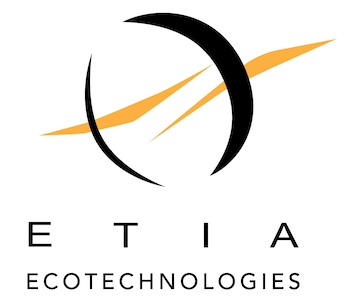When a waste becomes a resource for energy and new materials
From creating energy from waste, through biochar and solid fuel production, our goal is to support the industry all over the world in waste valorization. Learn more about our approach towards waste valorization.
Introduction to valorization. When a waste becomes a resource for energy and new materials
The challenge
Our industry produces more and more residues that are no longer useful. The tremendous growth in a waste generation all over the world has quickly become one of the key challenges of today’s economy. Despite the better awareness of environmental aspects, disposal of residues that have no economic value remains a big difficulty for most of the sectors in the world.
Governments and societies stand against the problem by making their priority to prevent the waste generation. Among the industry, the effort focuses on reclaiming materials into the market. Still, the mechanical recycling calls for advanced processing technologies and high recovery rate is not always possible for local communities.
The demand for easy and viable methods to manage the waste is growing at tremendous speed. What are the solutions that can deal with unwanted residues, helping the environment and industry?
Towards the waste valorization
The concept of waste valorization is standing side by side with recycling and reuse technologies. Namely “enhancing the value”, valorization is a process of changing residues into products at a much greater value. The results can include quality chemicals, materials, fuels, and energy, as well as many other products beneficial for a local economy.
It requires not only technical knowledge but also a global approach to accomplish this goal. Residues and products often need to be seen from a wider perspective that just one industry. Creating a closed system of valorization, industries need to communicate with each other in the global economy pattern.
Ecotechnologies. Inspired by nature.
In ETIA, we try to put all of this aspects together and understand how the economy operates as a whole. Such an understanding must begin in ecology and patterns in nature ecosystems itself. We avoid thinking of industries as separate, independent territories. Instead, inspired by global ecosystems, we strive on creating connections between different activities – so the residue of one sector can nourish another.
This is why our processing technologies often take place at the edge of industries. Instead of focusing on waste destruction, they work for keeping the global circulation of resources and bringing their value to other industries, communities, and their surroundings.

Technology in service of waste valorization
Today’s industries produce an enormous variety of waste and residues, showing an unlimited range of properties. Every business is different and has its unique demands. Are there any universal tools that can support the industry in valorizing their residues?
We think the answer is yes.
In 2003, ETIA created a Biogreen® process, which applies to any organic (carbon-based) product. Our solution is based on pyrolysis treatment, where the material is exposed to high temperature in the absence of oxygen. This results in the chemical and physical conversion of residues into different molecules.
Received products – solid, liquid and gas – are bringing a different, often more superior quality that original residue. Thanks to this, the process becomes an increasingly important for today industry, allowing to deliver far greater value to common materials and waste.
From creating energy from waste, through biochar and solid fuel production – Biogreen® process helps the industry all over the world to produce value from their waste.

ETIA approach to waste valorization
Why it matters?
When speaking of the circular economy, it can be hard to know where to start. The answer to specific needs of industry is not always available within the same economic sector. It takes many effort and involvement of companies, technology providers and local administration to create a reliable, usable valorization process for residues and waste.
However, the results are worthy of it. Waste valorization brings together the eco-innovation, environmental responsibility and profitability aspects. By creating new products, it opens the opportunity for tapping into new and emerging markets, create increasing income or reducing the cost of company operation. It is a sound business approach that brings real revenues.
Waste valorization currently makes its way through the industry as a rewarding business strategy. It often requires thinking out of the box, but by taking residues to another level, you can get to what matters: the circular economy and efficient management of your resource.
Comments are closed.
Articles récents
- ETIA propose une technologie prometteuse pour valoriser les déchets plastiques non recyclables
- Vow ASA Subsidiary, Etia, Secures Contract with Qingdao Deeshenghengxin Food Company
- Major milestone reached in Vow’s breakthrough US project
- Vow ASA: Vow awarded three Safesteril contracts
- Vow ASA: Vow and ETEL team up for recycling of end-of-life tyres
